Creating a garden in your backyard can be a rewarding and enjoyable experience. Not only does it add beauty to your yard, but it also provides you with fresh fruits, vegetables, and herbs. In this DIY guide, we will take you through easy steps on how to create a successful garden in your backyard.
When choosing the right location for your garden, make sure to pick a spot that is well-draining and receives at least 6 hours of direct sunlight. A level and open area with no puddles is ideal. Starting with a smaller size and growing veggies and herbs that you love to eat can help you gain experience and confidence. If you don’t have a yard, you can still start a garden by using raised beds or containers on patios or balconies.
Plan on growing some easy-to-grow veggies like tomatoes, cucumbers, and leafy greens. For herbs, try planting rosemary, thyme, or chives. If you want to try growing fruit, start with strawberries or blueberries as they grow quickly and don’t take up a lot of space. Basic tools that you’ll need include a shovel, rake, hose or watering can, small spade, strings, stakes, sprinkler, fertilizer, and fencing materials.
Test the soil to see if it’s between 6 and 7.5 pH and adjust as necessary. Deciding whether to use seeds or starts depends on your location and experience level. Choose plants that will thrive in your zone and consider companion planting. Rake the top 6 inches of soil, add fertilizer or compost if desired, and scatter seeds onto the soil or place starts in holes.
Key Takeaways:
- Choose a well-draining spot with sufficient sunlight for successful garden growth.
- Start small and consider alternative solutions like raised beds or containers for those without a traditional yard.
- Select easy-to-grow vegetables, herbs, or fruits that align with your preferences and are suitable for backyard gardening.
- Acquire basic gardening tools like a shovel, rake, and hose or watering can for successful garden maintenance.
- Test and adjust the soil’s pH level and nutrient composition as necessary for optimal growing conditions.
- Decide whether to use seeds or starts based on your climate and experience level, considering factors like companion planting and the last frost date.
- Prepare the soil by removing rocks and debris, creating holes or sowing seeds at the appropriate spacing and depth.
- Provide consistent care and maintenance for your backyard garden, including watering, fertilizing, and protecting plants from pests.
Choosing the Right Location
To get started, choose a well-draining spot with at least 6 hours of direct sunlight. This is important for successful plant growth and productivity. The selected location should be mostly level and open, without any obstructions like trees, rocks, or shrubs. It is recommended to avoid areas that have puddles after rain or are prone to flooding.
If you have limited space, raised beds or containers on patios or balconies can be used. This allows for easier maintenance and can be an excellent solution to garden design and landscaping for backyard garden without traditional yard space. When choosing plants, it is essential to consider the types of plants to be grown, such as vegetables, herbs, or fruits, and select varieties that thrive in the chosen location.
It is also important to test the soil’s pH and nutrient levels to determine what amendments may be needed. This can be done by purchasing a soil testing kit or taking a sample to a local gardening center for analysis. Knowing the soil’s composition can help determine the optimal location for planting and what plants will thrive in that area.
When choosing between seeds or starts, consider the climate and personal preferences. Starts are a great option for cooler climates or beginners, while seeds can be an excellent option for those with more experience. Companion planting and maximizing space can also be considered to optimize the garden’s productivity.
It is also crucial to know the last frost date and prepare the soil adequately by removing rocks, roots, and tilling. This ensures that the garden is set up for success before planting. Once the soil is ready, seeds should be planted or transplants placed into the soil according to the recommended depth and spacing. Proper care should then be given to the plants as they grow, including watering, fertilizing, and protecting them from pests.
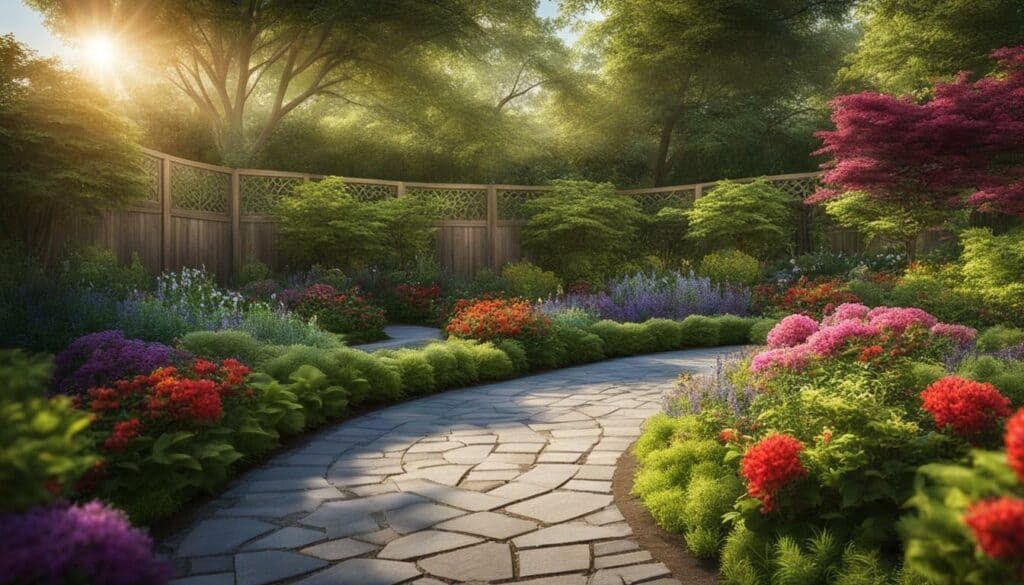
Starting Small and Alternative Solutions
If it’s your first garden or you don’t have a yard, consider starting small with raised beds or containers. You don’t need a large space to grow your own fruits, vegetables, and herbs. There are many alternative solutions available, such as container gardening, rooftop gardening, balcony gardening or even just a windowsill garden.
When choosing a location, make sure you select a spot that gets at least 6 hours of direct sunlight and has good soil drainage. If you have a yard, consider a smaller area for your first garden to gain practice and confidence before expanding. If you don’t have a yard, raised beds or containers can be set up on patios or balconies. There are many plant varieties designed to thrive in containers.
When planning your garden, choose vegetables or herbs that you enjoy eating. Some of the easiest vegetables to grow include tomatoes, potatoes, beans, cucumbers, leafy greens, lettuce, and squash. For herbs, try planting rosemary, oregano, thyme, or chives. If you want to grow fruit, start with strawberries or blueberries as they don’t require much space and grow quickly.
To get started, you’ll need some basic garden supplies like a shovel, rake, and hose or watering can. You can buy these items individually or look for a beginner’s kit that includes essential tools. It’s also important to test the soil to determine its pH level and nutrient makeup. Adjust the soil if necessary to ensure it’s within the optimum pH range of 6 to 7.5.
Choose between planting seeds or using starts (small plants) based on your experience and the climate in your area. While starts are more expensive, they reduce the initial growing time. Seeds are more cost-effective, especially if you save seeds year after year. Consider getting starts from community centers or farmers’ markets, where you can also ask for advice on different varieties and growing conditions.
Before planting, determine your growing zone and find plants that will thrive in your specific zone’s temperature ranges. Maximize your space by choosing plants that grow well next to each other. Companion planting can extend your growing season. For example, plant spinach or herbs early in the season and then tomatoes as the season warms up. You can also plant nasturtiums or marigolds throughout your garden to keep pests away.
Lastly, be mindful of the last frost date in your area as it will help you determine when to plant your seeds or starts. Prepare the soil by raking the top 6 inches to create an even surface and mix in compost or fertilizer if desired. Dig holes for starts or scatter seeds onto the soil, following the recommended depths and spacing provided by the plant tag. Gently backfill the holes and water your plants regularly.
Starting small with a well-planned garden and alternative solutions like containers or raised beds can be a rewarding and manageable way to grow your own fresh produce. It allows you to connect with nature, enjoy the health benefits of spending time outdoors, and harvest your own homegrown fruits, vegetables, and herbs.
Selecting Suitable Plants
When starting a garden, it’s important to choose plants that will thrive in your specific location. Select vegetables, herbs, or fruits that you enjoy eating and are easy to grow, such as tomatoes, beans, lettuce, or strawberries. It’s also crucial to consider the amount of sunlight your garden area gets and choose plants that are suitable for your growing zone.
Once you have an idea of what you want to grow and where, it’s important to test the pH of the soil to ensure it’s healthy for your plants. A pH test will indicate whether the soil is too acidic or alkaline and help you adjust it accordingly to match the needs of your chosen plants. You can purchase a pH testing kit at your local hardware or garden store.
When selecting plants, it’s also important to consider the concept of companion planting. Certain plants can benefit from being planted together, while others may compete for resources or attract pests. Research companion planting options for your chosen plants to maximize growth and minimize potential damage.
Additionally, deciding whether to use seeds or transplants is another important factor to consider. Seeds are generally less expensive but require more time and care, while transplants provide a head start but cost more. Consider your climate and experience level when making this decision.
Finally, the type of garden you want to create will also play a role in selecting suitable plants. Container gardening and raised beds are excellent options for those without traditional yard space. Container gardens provide flexibility and can be moved to different locations as needed, while raised beds offer improved drainage and soil quality.
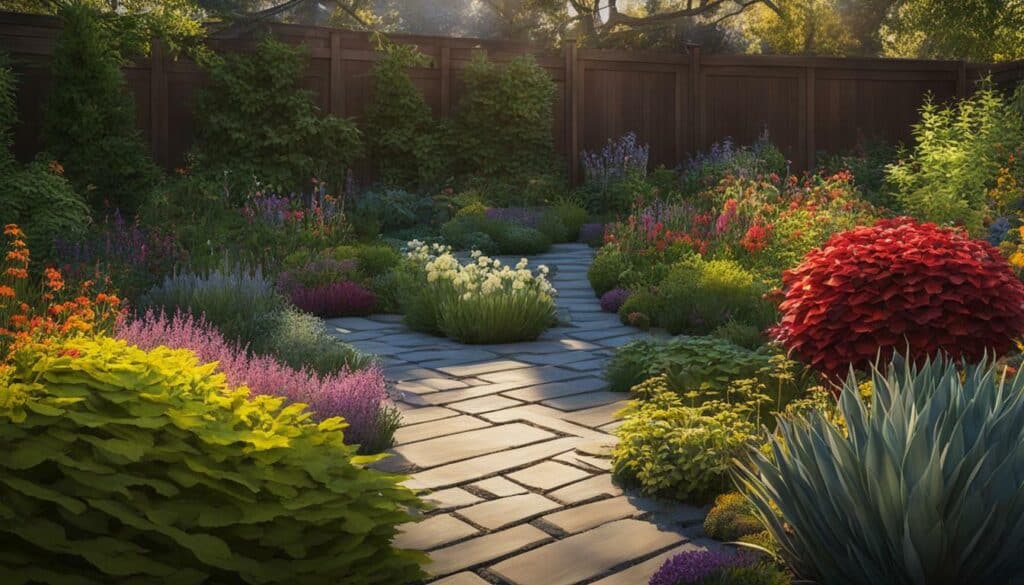
By keeping these factors in mind and selecting plants that are well-suited for your specific location and needs, you’ll be well on your way to creating a thriving backyard garden.
Choosing Essential Tools for Your Backyard Garden
Starting a backyard garden is an exciting project, but it requires a variety of essential tools. As a beginner, it’s best to start with the basics, including a shovel, rake, and hose or watering can. These tools will help you prepare the soil, mark out rows, and water your plants. Additionally, you may need a small spade, string and stakes for marking out rows, a sprinkler for watering larger areas, fertilizer or compost for enriching the soil, and fencing materials for pest control.
When selecting your tools, look for ones that are comfortable to hold and sturdy enough to handle tough soil. If you’re on a budget, consider borrowing or renting equipment from a local gardening store or community garden. You can also find used tools online or at a garage sale to save money.
Before purchasing any tools, determine the size of your garden and make a list of everything you will need. This will help you avoid overspending and ensure you have the essentials to get started.
To summarize, here are the essential tools you’ll need to get started:
| Tool | Function |
|---|---|
| Shovel | For digging and turning soil |
| Rake | For leveling the soil and removing debris |
| Hose or watering can | For watering your plants |
Once you have all the necessary tools, you’ll be ready to start preparing your garden for planting.
Testing and Adjusting Soil Conditions
Test the soil to determine its pH level and nutrient makeup, and make any necessary adjustments to ensure optimal growing conditions. Soil that is too acidic or alkaline can lead to stunted growth and poor yields. If the pH is too high, add lime to lower the acidity, and if the pH is too low, add sulfur to increase the acidity.
Additionally, it is important to assess the soil’s nutrient composition. If there are deficiencies, you can amend the soil with organic matter like compost or manure to improve its quality. This will also help your plants grow stronger and healthier, leading to better yields.

Tip: If you’re unsure of how to test your soil, reach out to your local cooperative extension office for guidance. They often offer soil testing services and can provide recommendations based on your results.
Remember to test your soil regularly, typically every 3-5 years, to ensure that it remains healthy and balanced. By testing and amending the soil, you’ll be well on your way to a successful and thriving backyard garden.
Choosing Seeds or Starts
Decide whether to use seeds or starts based on your climate and experience level, taking into account companion planting and the last frost date. Seeds are a more affordable option and offer a wider variety of plants to choose from, but require more attention and care. Starts are already established and more likely to yield a successful harvest, but are more expensive and may not be available for all plant types.
Research your growing zone and choose plants accordingly. Some plants like tomatoes and peppers require a longer growing season and may need to be started indoors before being transplanted outside. Others like lettuce and radishes can be directly sowed into the ground.
Maximize space by planting companion plants that grow well together. For example, plant basil next to your tomatoes to improve flavor and deter pests. Similarly, planting marigolds next to your cabbage can repel harmful insects.
Determine the last frost date in your area to determine when to plant. Planting too early can lead to frost damage and stunted growth. Use a gardening app or consult with a local farmer for accurate information.

Preparing the Soil
Preparing the soil is an essential step in starting a garden. The first step is to choose a well-draining spot with at least 6 hours of direct sunlight. It is important to avoid areas with puddles after rain, as waterlogged roots can be detrimental to plants. If you don’t have a yard, you can opt for raised beds or containers on patios or balconies.
When selecting what to grow, it is recommended to choose vegetables or herbs that you enjoy eating. Some easy vegetables to grow include tomatoes, potatoes, beans, cucumbers, leafy greens, lettuce, and squash. For herbs, try rosemary, oregano, thyme, or chives.
Conduct a soil test to determine the pH level and nutrient makeup of the soil. This will help determine what amendments, such as limestone or sulfur, may be needed to optimize the soil’s pH. Choose plants that thrive in your growing zone and maximize space by selecting companion plants that grow well together. Research the last frost date for your area to determine the optimal planting time.
Afterward, prepare the soil by removing rocks and debris, and create holes or sow seeds according to the recommended spacing and depth. Consider adding fertilizer or compost to enrich the soil. Dig holes for starts or scatter seeds, following the recommended depths and spacing.
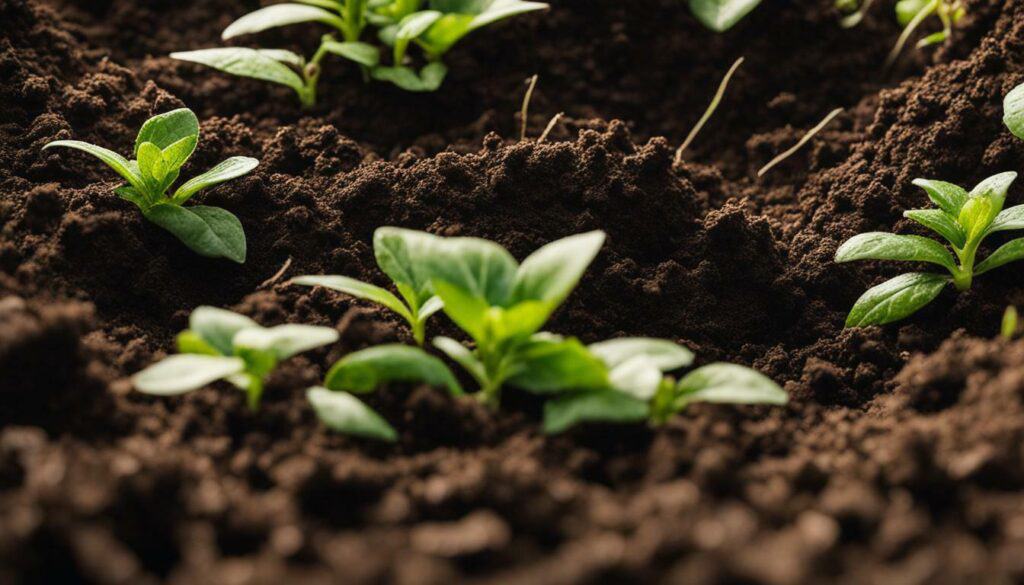
Finally, water and care for your garden according to specific plant needs. Starting a garden can provide a connection to nature, health benefits, and the satisfaction of growing and eating your own produce.
Care and Maintenance
Provide consistent care and maintenance for your garden by watering, fertilizing, and protecting plants from pests. Water your plants deeply once or twice per week, depending on your climate and soil type. Avoid overwatering, which can cause diseases and root rot. Fertilize your plants every 2-4 weeks with a balanced fertilizer to promote healthy growth.
Protect your plants from pests like aphids, slugs, and snails by using organic methods like companion planting, handpicking, or spraying with a natural insecticide. Keep an eye out for signs of pests or diseases, like yellowing leaves or wilting plants, and take action immediately to prevent further damage.
Weed your garden regularly to prevent competition for water and nutrients. Mulch around your plants to retain moisture and suppress weed growth. Keep your garden clean and tidy by removing dead leaves, stems, and flowers regularly.
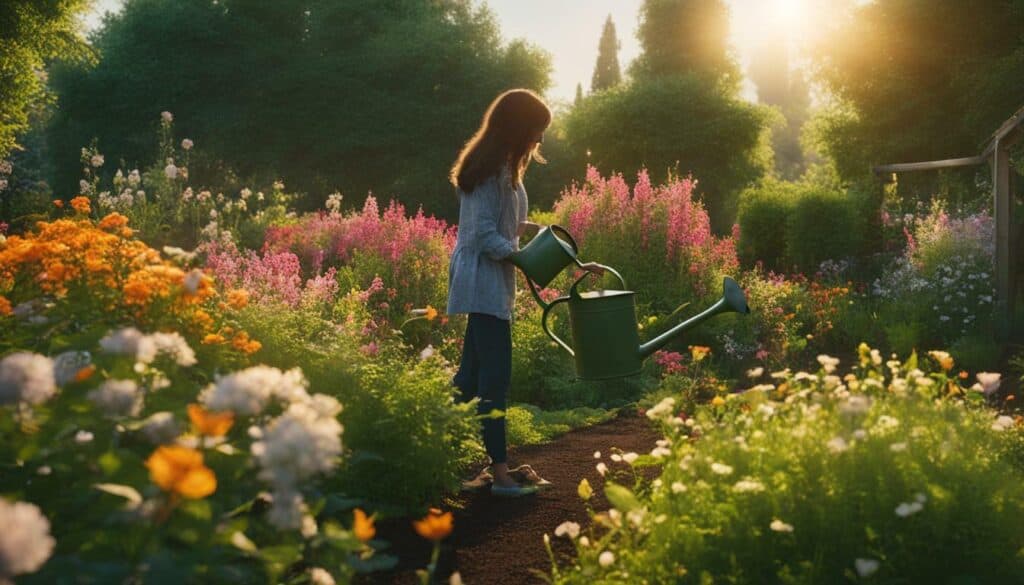
Finally, enjoy the fruits of your labor! Harvest your vegetables and herbs regularly to promote continued growth and to enjoy fresh produce from your garden. Share your bounty with friends and family, and use your harvest in delicious recipes. Gardening can be a fulfilling and enjoyable hobby, providing exercise, fresh air, and the satisfaction of growing your own food.
Conclusion
Remember to enjoy the process and the benefits of growing your own fresh produce. Starting a garden can be a satisfying way to connect with nature and provide fresh and healthy food for yourself and your loved ones. No matter the size of your space, there are various options available for cultivating a garden, such as container gardens, raised beds, and traditional plots.
When planning your garden, it is crucial to consider the specific conditions of your space, such as the amount of sunlight and soil quality, to ensure healthy plant growth. Testing and adjusting soil conditions, whether through adding compost or adjusting the pH level, can provide optimal conditions for your plants to thrive.
Additionally, choosing the right plants for your garden is essential for success. Selecting easy-to-grow vegetables, herbs, or fruits that align with your preferences and experience level can lead to a bountiful harvest. It is also important to choose the right method of planting, whether through seeds or transplants, based on your climate and needs.
Finally, maintaining a garden requires consistent care and attention. Watering, fertilizing, and protecting plants from pests are all crucial steps to ensure healthy growth and a successful harvest. With dedication and effort, starting a vegetable garden can provide numerous health benefits and a closer connection to nature.
FAQ
Q: Can I create a garden in my backyard even if I don’t have much experience?
A: Absolutely! Starting small and choosing easy-to-grow plants will make the process enjoyable and manageable for beginners.
Q: How do I choose the right location for my backyard garden?
A: Look for a spot in your backyard that has good drainage and receives at least 6 hours of direct sunlight each day.
Q: What if I don’t have a traditional yard?
A: No worries! You can still create a garden using raised beds or containers on a patio or balcony.
Q: What types of plants should I choose for my backyard garden?
A: Select vegetables, herbs, or fruits that you enjoy eating and are known to be easy to grow, such as tomatoes, beans, lettuce, or strawberries.
Q: What tools do I need to start a backyard garden?
A: Basic gardening tools like a shovel, rake, and hose or watering can will help you get started and maintain your garden.
Q: How do I test and adjust the soil conditions in my backyard garden?
A: It’s important to test the soil’s pH level and nutrient makeup. You can make necessary adjustments by adding compost or other amendments.
Q: Should I use seeds or starts for my backyard garden?
A: The choice between seeds or starts depends on your climate and experience level. Consider factors like companion planting and the last frost date.
Q: How do I prepare the soil for my backyard garden?
A: Start by removing rocks and debris. Then, create holes or sow seeds at the recommended spacing and depth to ensure proper growth.
Q: How do I take care of my backyard garden?
A: Consistent care and maintenance are essential. Water your plants regularly, fertilize as needed, and protect them from pests.
Q: What are the benefits of creating a garden in my backyard?
A: By growing your own fresh produce, you’ll enjoy the satisfaction of nurturing plants and the added benefits of having access to healthy, homegrown food.
Can I Use the Same Steps to Create a Garden in My Backyard?
When it comes to designing a garden step-by-step, it’s crucial to consider the specific conditions of your backyard. Factors like sunlight, soil quality, and available space will determine the suitable plants. Before planting, clear the area and create a layout plan. Prepare the soil, choose appropriate plants, and plant them accordingly. Regular maintenance is necessary for a thriving garden, including watering, pest control, and trimming.
Source Links
- https://growitbuildit.com/how-to-start-a-vegetable-garden-in-your-backyard/
- https://www.npr.org/2020/04/17/837300800/this-is-a-good-time-to-start-a-garden-heres-how
- https://www.wikihow.com/Start-a-Garden
- https://sebsnjaesnews.rutgers.edu/2020/04/choosing-the-right-location-for-your-vegetable-garden/
- https://www.gardensthatmatter.com/choose-garden-location/
- https://morningchores.com/vegetable-garden-location/
- https://www.thespruce.com/how-to-start-a-garden-from-scratch-2132778
- https://www.bhg.com/gardening/yard/garden-care/ten-steps-to-beginning-a-garden/
- https://www.fromhousetohome.com/garden/pick-the-right-plants/
- https://www.wikihow.life/Choose-Plants-for-a-Garden
- https://www.realhomes.com/advice/how-to-choose-plants-for-your-garden
- https://www.gardendesign.com/how-to/tools.html
- https://www.eatingwell.com/article/17068/the-only-tools-you-need-to-start-a-garden/
- https://www.washingtonpost.com/home/2023/02/28/essential-garden-tools/
- https://yourbackyardtips.deere.com/soil-testing-your-lawn-and-garden/
- https://www.almanac.com/soil-preparation-how-do-you-prepare-garden-soil-planting
- https://extension.umn.edu/managing-soil-and-nutrients/soil-testing-lawns-and-gardens
- https://www.thespruce.com/vegetable-garden-seeds-or-seedlings-1403412
- https://www.gardenary.com/blog/should-you-plant-seeds-or-plants-in-your-garden
- https://hort.extension.wisc.edu/articles/beginning-vegetable-garden-basics-site-selection-and-soil-preparation/
- https://www.homedepot.com/c/ai/how-to-prepare-soil-for-a-garden/9ba683603be9fa5395fab90dd5b2e0e
- https://www.familyhandyman.com/project/lawn-maintenance-and-gardening-tips/
- https://food52.com/blog/27431-how-to-maintain-a-vegetable-garden
- https://growingourown.wordpress.com/6-conclusion/
- https://www.ncbi.nlm.nih.gov/pmc/articles/PMC6372235/

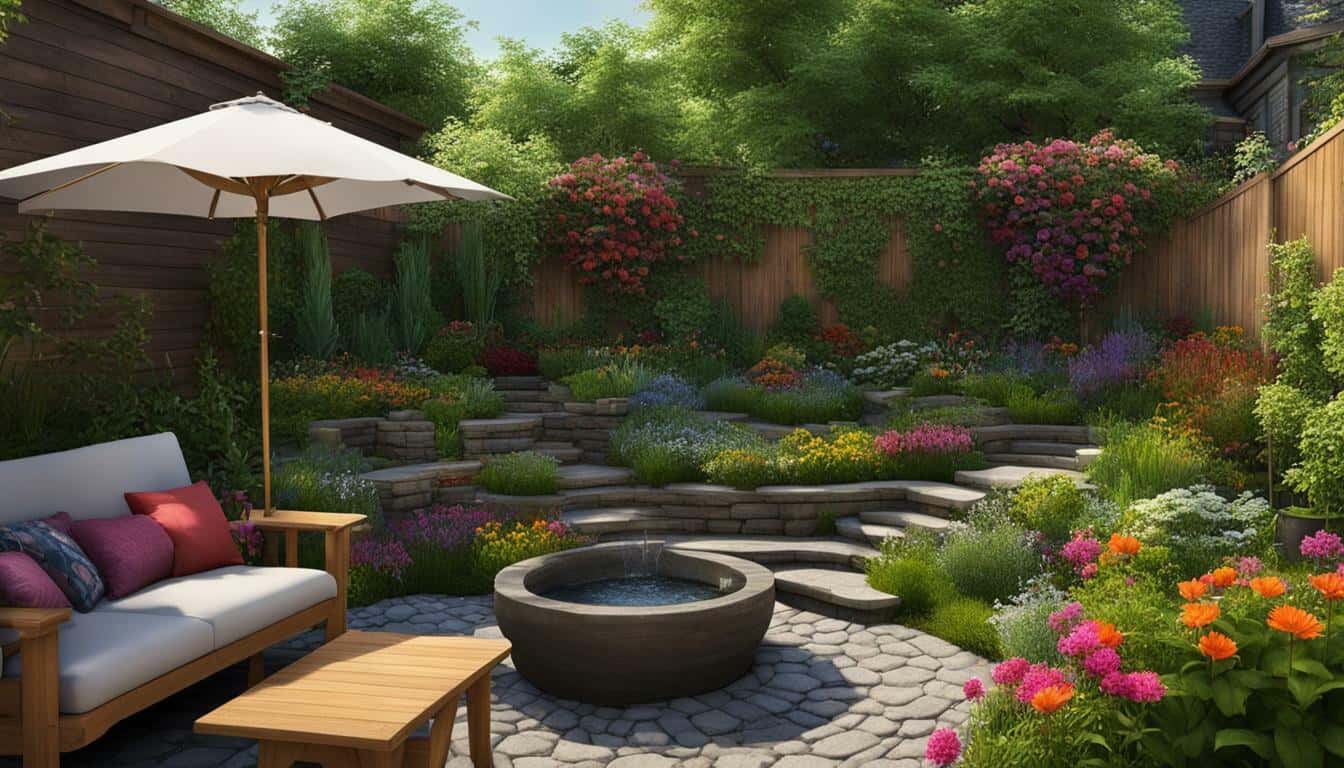



Leave a Reply